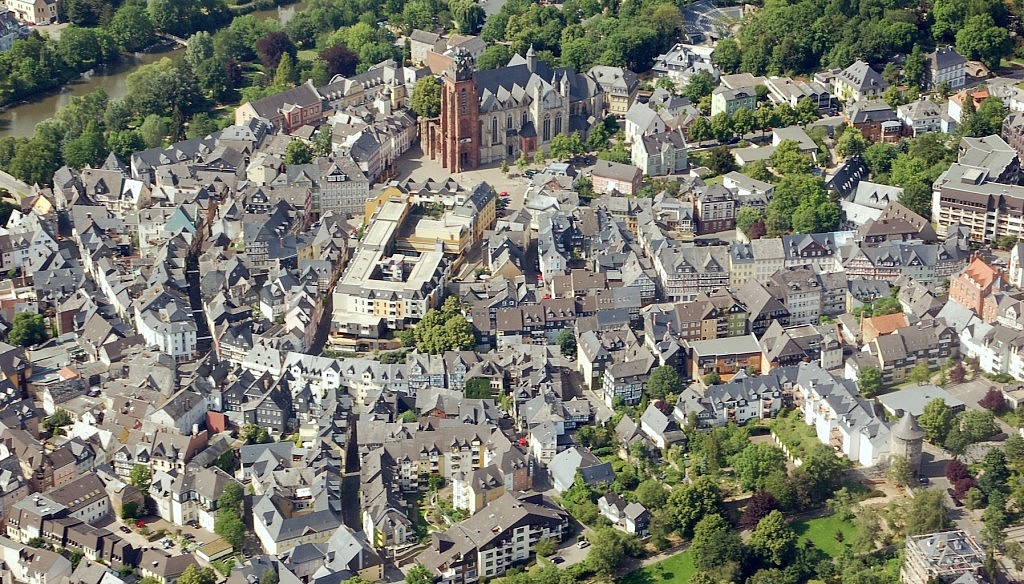Small town wonder
While Frankfurt may not have much to warrant repeated visits, Wetzlar, a medieval small town charm located just about an hour’s drive from the city, may just be able to change that. And yes, if you find the name of the city vaguely familiar, that’s because Leica’s headquarters and factory are located there.
Wetzlar Cathedral
Churches over 500 years old are a common sight throughout small towns in Europe, but the one in Wetzlar stands out not for being the oldest, nor the largest, but for being incomplete. Work on the church in its current state began in 1230 (though a church originally existed on the same site since 897), continued in fits and starts for some 400 years until the city went bankrupt just before 1600. This was due largely to new trade routes now skirting Wetzlar. Evidence of its incompleteness – a half-finished tower, a portal with no steps leading up to it and drab grey stones, evidence of the Romanesque basilica that the new church was supposed to replace. The cathedral’s long building period also makes it unique in that architectural influences from the gothic, romanesque and baroque movements can be seen. Despite its state, services are still conducted on a regular basis.
Lottehaus
A short stroll up the hill from the Wetzlar Cathedral and town square is Lottehaus, the former residence of Charlotte Buff. Her name may not be known to most, but the name of her admirer may ring a bell: Johann Wolfgang Goethe. The author, who was then a young lawyer, arrived in Wetzlar in May 1772 with the purpose of gaining practical experience at the Reichskammergericht, the Holy Roman Empire’s highest court. The young Goethe, however, had other ideas – soon after arriving, he met and fell in love with Buff. The only catch: Buff was already engaged to be married. This rejection and the subsequent suicide of his friend prompted Goethe to write his most celebrated novel, The Sorrows of Young Werther. The house where Buff once lived is now a museum and one of the rooms is dedicated to her memory, a fitting tribute to Goethe’s muse.
Eisenmarkt
Make your way down the hill again and venture a little further into Wetzlar’s historic town square. At the Eisenmarkt (German for ‘iron market’) crossroads, you may notice a charmingly crooked timber building and just across from it, a plaque commemorating a photo taken of the Eisenmarkt by Leica engineer Oskar Barnack in 1913. The photo itself isn’t too remarkable, a comparatively ordinary shot depicting life in a small German town prior to the outbreak of the first World War. However, consider the part where the photograph was captured on an Ur-Leica, the camera that would go on to set the template for compact cameras even to this day. Street photography with compact cameras is nothing special today, what with high-quality cameras integral to most mobile phones, but in the early days of the 20th century, cameras were bulky, arcane devices that required both patience and skill to operate. Barnack liberated street photography from those constraints and with that one photo, changed the world.












